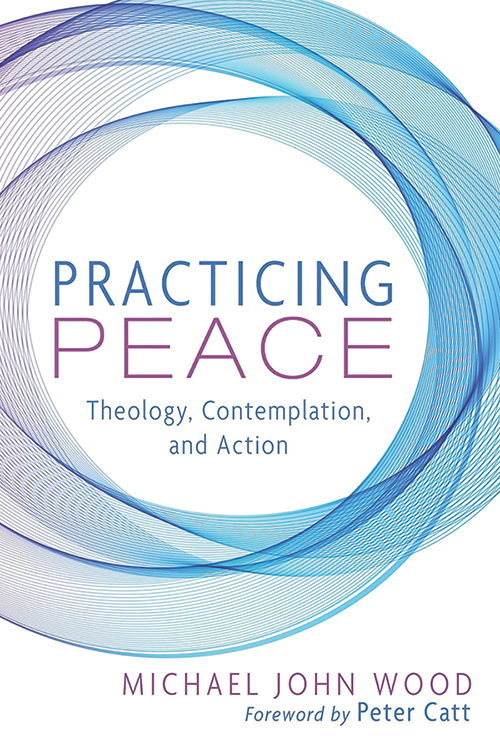
Practicing Peace: Theology, Contemplation, and Action
Reviewed by Rob Pierson
October 1, 2023
By Michael John Wood. Wipf and Stock, 2022. 270 pages. $50/hardcover; $35/paperback or eBook.
Michael Wood’s book, Practicing Peace, offers reflection and practical insights that he has gleaned over decades of work as an Anglican priest and chaplain, an educator for peace and nonviolence, and a leadership coach for business and church communities in Australia. Wood addresses his book to three groups: (1) church leaders; (2) “any Christian who wants to contribute more intentionally to peace in the world, at home, in the community, at church, or at work”; and (3) “young and emerging leaders of any (or no) faith background who want to make a difference in the world.” Friends may find much in the book to deepen their faith and sharpen their practice.
Wood divides his book into three parts, which make up the subtitle: “Theology, Contemplation, and Action.” These three, he says, are aspects of one practice. The theology section will matter most to those who engage actively with church and the Bible. Put in traditional Christian terms, Wood’s core argument is that the practice of peace is, or at least should be, central to Christian faith.
To Wood, the central revelation of Christianity is that God is Christlike. Jesus gives us a view into God’s loving nature. At the same time, Jesus exposes the ocean of violence—personal, structural, and systemic—in which we live. Although we say we want peace, our way of pursuing it only fuels the chaos. Christ interrupts that cycle and demonstrates a way of life characterized by acts of peace and healing. That practice of peace becomes central to our own way of living.
Wood looks specifically at the dark places: why we are violent, how our societal attempts to curtail violence are themselves violent, and how certain doctrines and reading of Scripture feed into that violence. But if God is Christlike, says Wood, then any understanding of church or Scripture that propagates violence simply cannot stand in the face of Christ’s revelation of a God of love.
In some ways, the theology section reads like a long preamble. The insights are meaningful, but I felt sorry that the author felt compelled to take more than half of the book to justify his work from a Christian perspective. In contrast, the second half of the book reads like a field guide: a how-to for the practice of peace based on Wood’s experience as chaplain and coach.
That experience stretches back to the years Wood spent—sometimes at sea—in human resource roles for the shipping and banking industries, even before he pursued a divinity degree. He has worked since in both religious and secular circles promoting collaborative tools, restorative justice, peace education, and contemplative prayer. Based on that background, this book is not so much about peacemaking as about using contemplative and collaborative tools to foster a human environment where the practice of peace can flourish.
Some of his suggestions will sound familiar to Friends: for example, talking circles where each person has a voice and “a larger truth” can emerge beyond any individual view. But other tools exploring reflection, forgiveness, and the dance between power and love may be less familiar and intriguing. Appendices supply detailed suggestions useful for both individuals and groups.
Underlying these practices is a call to contemplation: “the only ultimate answer to the unreal and insane world. . . . To learn contemplative practice is to learn what we need so as to live truthfully and honestly and lovingly.” These words from Archbishop Rowan Williams underline that in the practice of peace, action and contemplation are parts of the same motion.
At heart, this is a practical book of tools and encouragement. Wood’s book would be excellent for small group study, and each chapter ends with a helpful summary of the main points as well as queries for deeper reflection.
Wood’s final advice on the practice of peace is typically practical: “If you are not sure how to start, start small. Take the next small step. Invite a few people together. Sit in a circle, and get to work.”
Rob Pierson is a member of Albuquerque (N.M.) Meeting and a graduate of Earlham School of Religion. He aspires to apply the practice of peace in all the circles of his life—from home, to Quaker meeting, to his work with Friends World Committee for Consultation, and in his daily work life among engineers.



Comments on Friendsjournal.org may be used in the Forum of the print magazine and may be edited for length and clarity.